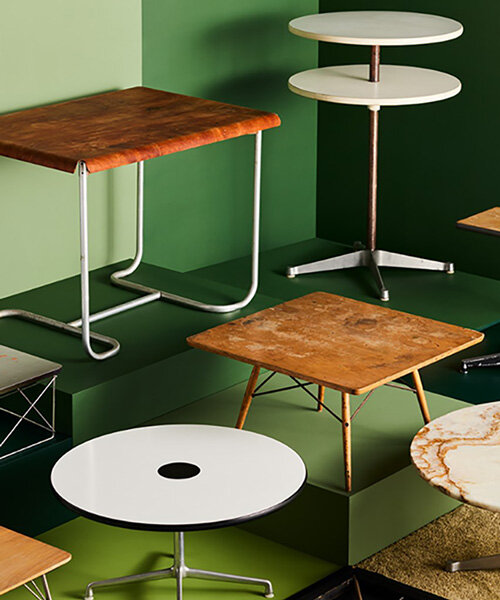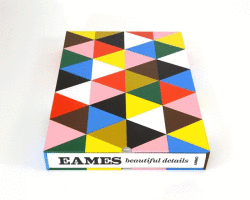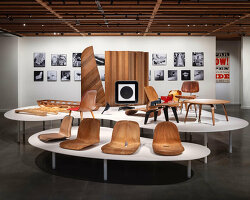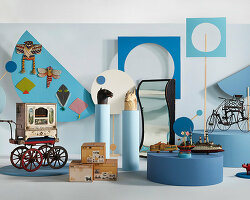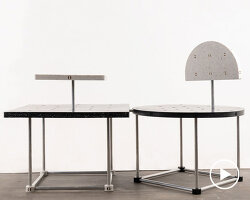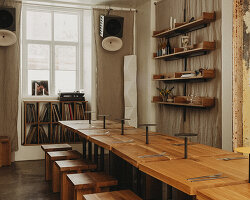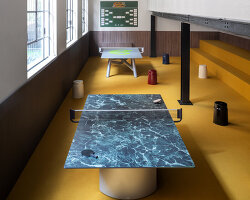discover the eames tables
The Eames Institute of Infinite Curiosity celebrates the launch of the latest exhibition Tables, Tables, Tables, curated to spotlight the enduring influence of Ray and Charles Eames‘ contributions to table design. While the Eames’ creative legacy is commonly defined by their iconic chairs, the Institute aims to highlight this oft overlooked area of their body of work spanning three decades. ‘There is an entire adjacent legacy of tables that demonstrates the duo’s same thoughtful approach to problem-solving, application, materials, and quality,’ the team at the Eames Institute explains.
 photo by Pippa Drummond, styling by Natasha Felker
photo by Pippa Drummond, styling by Natasha Felker
experimental systems and prototypes
The Eames Institute‘s newest exhibition details a range of tables created by Ray and Charles Eames, including early works in plywood, experimental prototypes from their studio, and examples of table systems created for the vast contract market — including the folding ‘drop legs’ of the DTM (Dining Table Metal) to the flexible system offered by the Segmented Base tables.
‘Curating this exhibit was an absolute joy,‘ says Llisa Demetrios, the Eames’s youngest granddaughter and the Institute’s Chief Curator. ‘It’s fascinating thinking of the countless iterations that my grandparents went through to create each table. Although somewhat simple upon first thought, each table has its own detailed background and meaning in the history of their designs.’ Tables, Tables, Tables is currently on view at The Eames Institute of Infinite Curiosity.

photo by Pippa Drummond, styling by Natasha Felker
follow the design process of charles and ray
Ray and Charles Eames recognized that the function of a table greatly influences its appearance. They believed a table should be designed not only for the user’s comfort, but also to suit the surrounding environment and intended use. The Eameses introduced Segmented Base Tables in 1964, which allowed for easy customization of a table’s shape and size. This exhibition delves into the Eames’ base system, which remains popular today and has evolved to include modern features such as hidden power outlets, data connections, and wireless charging capabilities.
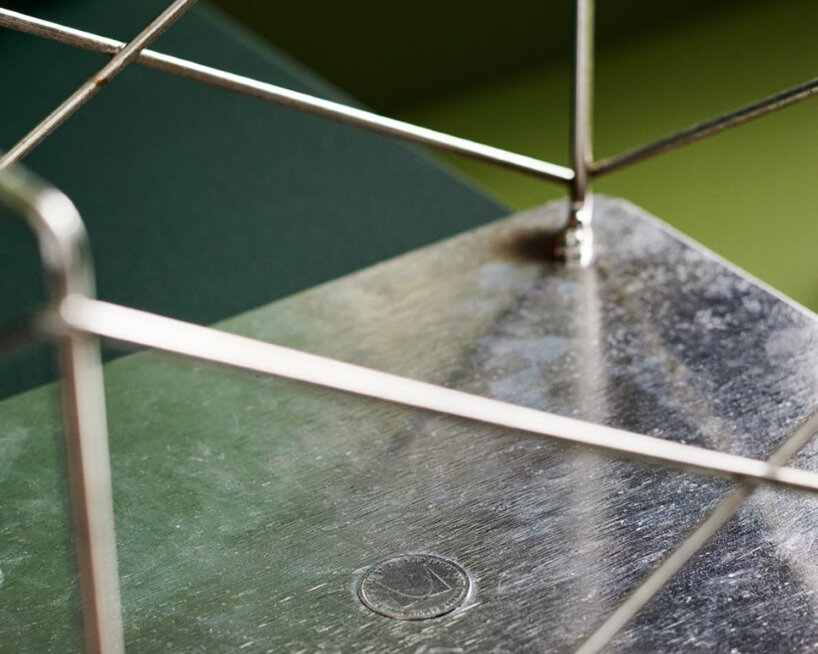
photo by Pippa Drummond, styling by Natasha Felker
Tables, Tables, Tables explores Charles and Ray’s methodical approach towards addressing problems, as they meticulously analyzed materials, designs, shapes, and applications to enhance one of the most prevalent and extensively utilized objects in our everyday lives — tables. Apart from showcasing archival works, an essay by architect and designer Kim Colin from Industrial Facility offers a reflective account, utilizing the Eames’ designs as a perspective to examine the development of tables and their usage in contemporary settings. The essay primarily highlights the shift in the problems associated with table design over time.
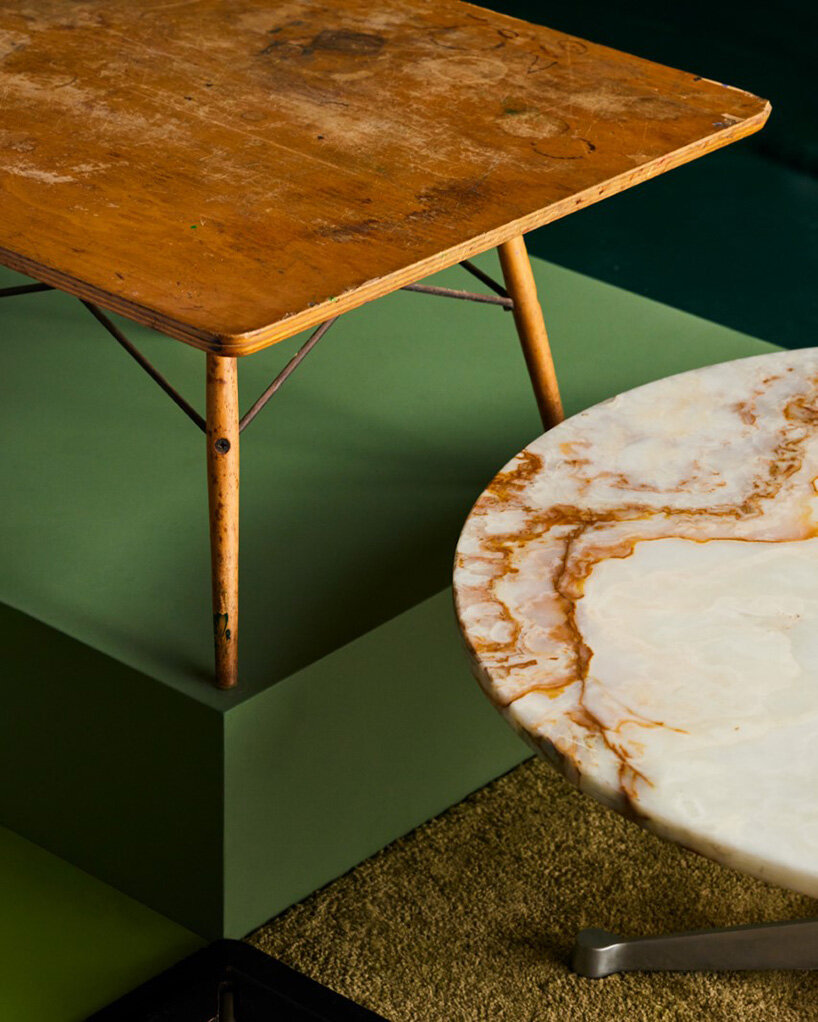
photo by Pippa Drummond, styling by Natasha Felker
the eames institute
The team at the Eames Institute of Infinite Curiosity describes themselves at the ‘stewards of the the Eames Ranch, the former home of Charles’s daughter Lucia Eames, as well as the Eames Collection, the world’s most comprehensive and unique collection of Eames designs and related ephemera in the world.’ The group held a pop-up at New York’s Herman Miller flagship, which displayed a selection of the thousands of artifacts designed and accumulated by Charles and Ray and later collected by the family.
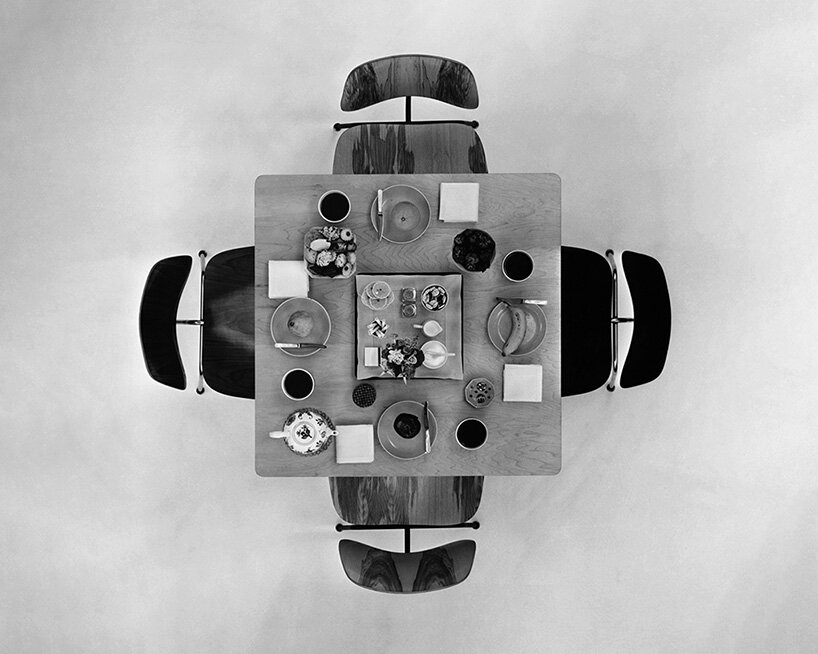 image © Eames Office LLC
image © Eames Office LLC







project info:
exhibition: Tables, Tables, Tables by the Eames Institute of Infinite Curiosity
